1. The Author
1.1. Nassim Nicholas Taleb
1.2. Biography
1.2.1. 53 year-old Lebanese public intellectual who lived through the civil war in his country that could easily have killed him. He comes from a prestigious Orthodox Christian family, studied Mathematics and Management in France and became a "quant" - one of the mathematically gifted traders/analysts that the investment banks snapped up during the 1980s. He is said to have made a packet in the financial crashes that have spanned his career - first the stock-market crash of 1987 and finally the banking crash of 2008. He is distinguished professor of risk engineering at the Polytechnic Institute of New York University but does no regular teaching and all his research is independently financed, possibly by himself. He is a prolific writer and a "circuit" public intellectual who claims on his website that he does " NOT wish to have a public life or public intellectual life" except for book promotions. He is a prickly character who divides opinion
1.3. Previous books
1.3.1. Fooled by randomness
1.3.1.1. Taleb takes a swipe at all those - including himself - who've done well in the markets and want to claim superior skill, rather than plain luck, for it. He wants to take down a peg or two all those who re-write history to their own glory. The book, written before the crash, gave Taleb a niche and loyal following and infuriated those who felt he was spitting in the communal soup: rubbishing the methods and markets that had made him rich.
1.3.2. The Black Swan
1.3.2.1. Published just before the banking crisis, the book was about unpredictable events - "unknown unknowns" - and how to cope with them. Black swans are a reality in Australia. But before the discovery of Australia, a gambler would have felt on safe ground betting that there would never be a black swan. And yet the gambler would have been wrong. World history has been regularly disrupted by "black swan events", and no one should ever say never. The book was a serious bestseller and his third book, "Anti-fragility", earned hism a $4m advance.
2. Who are his enemies?
2.1. Michiko Kakutani
2.1.1. http://www.nytimes.com/2012/12/17/books/antifragile-by-nassim-nicholas-taleb.html?pagewanted=2&_r=0&ref=books&pagewanted=all
2.2. David Runciman
2.2.1. http://www.fooledbyrandomness.com/totheeditor.html
3. Who are his friends?
3.1. Mark Spitznagel, Austrian-school uber-bear hedge fund billionaire and economic advisor to Republican candidate Ron Paul
3.2. David Cameron
3.2.1. http://www.thersa.org/events/video/archive/david-cameron-in-conversation-with-nassim-taleb
4. The syndicated piece
4.1. Matt Ridley review in the WSJ
4.1.1. http://online.wsj.com/article/SB10001424127887323353204578128872051100906.html?KEYWORDS=matt+ridley
5. Best criticisms
5.1. There's nothing new here. Economists have been going on about increasing returns for years. which is all convexity amounts to
5.2. Taleb puts too much store by responding to randomness and not enough on trying to understand things. We wouldn't have Anti retro-viral Aids drugs without a huge effort to understand HIV.
5.3. It's a trivial idea that's been over-stretched
5.4. Taleb produces no useful applications of his idea - he offers nuggets of wisdom that no one ever seriously disputed
5.5. This is philosophy for traders - that explains its popularity, but also its shallowness
6. The Idea
6.1. Fragile things - a glass of champagne - survives very minor knocks but suffers catastrophe quite easily
6.2. Things that don't break at all - like rocks - survive well but don't prosper
6.3. Things that prosper are "anti-fragile" - they don't do too catastrophically under knocks, and they have some chance to prosper
6.4. Success in many fields comes from avoiding catastrophe while still being open to taking advantage from some outcomes
6.5. Rather than trying to plan everything, we should work to make the world more anti-fragile. That will dependably give us true growth and improvement.
7. How to apply it yourself and come across as smart and knowledgeable
7.1. Think of anything good that has happened to you
7.1.1. An old friend finds me on Linked In and offers me a wonderful opportunity
7.2. Imagine how bad luck could have disrupted the goodness
7.2.1. I had not filled out my LinkedIn profile
7.3. Ascribe whatever countered that bad luck as contributing to "anti-fragility"
7.3.1. "Social Media is part of my anti-fragility strategy and is making career structures anti-fragile". "Facebook convexifies my opportunity space"
8. The picture that explains it all
8.1. A couple of pictures will illustrate the key points of the book
8.2. First, how random distributions with as much up-side as down-side are transformed by strategies that are "anti-fragile" or "convex"
8.3. Second - why it is better to spend time honing an anti-fragile strategy than trying to understand the underlying process that creates the complex outcomes
9. Key terminology
9.1. Convexity
9.1.1. Think of a process
9.1.1.1. for example, scientific research
9.1.2. Double what goes in
9.1.2.1. ie double the number of scientists
9.1.3. If more than double comes out, it is convex
9.1.3.1. more than double ought to come out, because knowledge builds on knowledge
9.2. Fragilista
9.2.1. "somebody who causes fragility because he thinks he understands what's going on"
9.2.1.1. eg, Alan Greenspan, as he stoked the credit bubble
9.3. iatrogenics
9.3.1. The medical processes that do harm while purporting to do good
9.3.1.1. like blood-letting in medieval medicine
9.4. heuristics
9.4.1. Rules derived from trial and error as opposed to those derived from theory
9.4.1.1. "red sky at night, shepherd's delight" versus the climate models that predict long term global weather patterns
